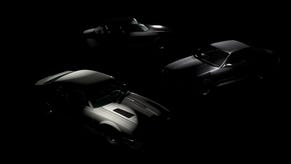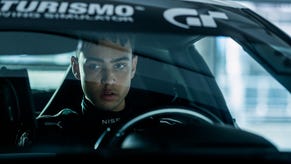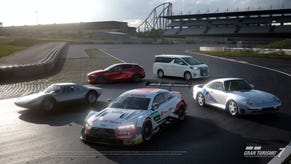Gran Turismo's four new 120Hz performance modes are game-changers
A special patch that offers a big improvement to responsiveness.
Gran Turismo 7 is one of the most fully-featured racing games ever made, with hundreds of cars, dozens of tracks and RT reflections on PS5. However, 120Hz and explicit VRR support have been missing - until the recent release of patch 1.31. What compromises are needed to add 120Hz and VRR support, and is a full 120fps even possible? We've been testing the game to find out.
First of all, it's important to set expectations. When developers mention 120Hz support they don't necessarily mean that the game will run at the full 120fps. There are many titles that run 'up to' 120fps, but what you actually get is an unlocked frame-rate in the 120Hz mode tha often fails to hit the target. That's what I expected from Gran Turismo 7 too - but the patch is actually much more interesting than that.
To get down to the basics, patch 1.31 adds four new graphical modes. You're given the choice of resolution or frame-rate mode at 120Hz, for two options, but this multiplies to four as having VRR enabled or disabled in the system menu produces very different outcomes.
The frame-rate 120Hz mode without VRR manages to hit a locked 120fps the overwhelming majority of the time while racing, even in intense 20-car battles, but in replays or menus you can expect drops to 80fps - a touch frustrating but acceptable. However, resolution is dropped significantly to achieve this, often turning out around 1260p, just above full HD.
Resolution mode at 120Hz is pretty similar, although more extreme conditions - rain and many cars onscreen - can induce a more significant frame-rate drop. Outside of gameplay, there are worse frame-rates than while racing, with dips down to 50fps in replays. In exchange, you get a higher 1440p resolution.
Unfortunately, both modes are let down somewhat by GT7's anti-aliasing, which struggles with the lower base pixel counts and doesn't result in great-looking cars or environments. Replays though do look better, which makes sense given the lower performance, perhaps at or near 4K.
| Mode + settings | Internal resolution |
|---|---|
| Resolution mode + 120Hz | 1440p |
| Resolution mode + 120Hz VRR | 2160p |
| Frame-rate mode + 120Hz | 1260p |
| Frame-rate mode + 120Hz VRR | 1440p |
Neither mode offers the RT reflections that resolution mode at 60Hz includes, though other visual settings seem virtually identical to the 'full-fat' 60Hz PS5 experience for the most part. I did notice a minor difference in the apparent draw distance of grass textures, though this could be related to rendering resolution. That means that even though we're operating fairly close to the PS4 release in raw pixel counts, foliage and crowd density are much more respectable than the last-gen version of the game. In-game UI elements also seem to render at a sub-4K resolution with these modes enabled, with a fair bit of aliasing on in-game text elements. It's not too bad, but it is noticeable.
Enabling VRR in most games doesn't do a lot to the underlying visual makeup of the title, especially if the game doesn't have an explicit, properly enumerated VRR setting - but GT7 is not like most games. Even though there isn't a VRR toggle in the menus, if we run the game with VRR enabled in the system settings and 120Hz toggled on, the game runs very differently.
In short, enabling VRR raises resolutions across the board, trusting your display to iron out any variations in frame-rate thanks to variable refresh rates, making for enhanced visuals as a result.
This works pretty well - the frame-rate mode in VRR does seem pretty similar to its non-VRR counterpart in terms of performance with a near-lock on 120fps, only dipping in wet weather races, while resolution climbs from 1260p to 1440p. Without specialist equipment, it's hard to notice these frame drops, so it feels a worthwhile trade-off for the slight increase in resolution.
The resolution option in VRR is even more interesting. On the surface, performance seems disappointing with typical gameplay frame-rates in the 70-100fps region, while replays hit the 50s regularly. However, that's because the game is rendering at a full 4K here, providing a seemingly identical presentation to the game in its 60Hz mode. Image quality is typically very nice and sharp, with a bit of aliasing on certain edges but otherwise looking very good on the whole.
While the increase in responsiveness here isn't huge, any frame-rate variations are masked by VRR and it's still an improvement over the stock 60Hz experience, so it's well worth engaging. The only concession is the lack of any ray tracing support, which does make replays look a bit less satisfying than they otherwise would.
Polyphony's approach to the VRR/non-VRR split is pretty smart, prioritising image quality on variable refresh displays and stable frame-rates on more typical panels. My only complaint is that none of this is made especially clear to the end user, so more selective players will need to consult online resources to discover that some of these options even exist.
While this patch provides some great new options for those playing on a TV or monitor, VR users don't benefit - the game still operates at 60fps with reprojection on PSVR2. It would make sense to offer a higher frame-rate option as the headset supports up to 120Hz, so perhaps we'll see that in the future. For the moment though, GT7 remains a tremendous VR experience that feels superb to play.
Interestingly, it's possible this patch originated in some sense from the work needed to get GT7 on PSVR2. After all, 60fps on two screens can have pretty similar GPU requirements to 120fps on one screen. If so, it's perhaps a bit surprising that the solution seems to have been so simple. Drop resolution and ray tracing, and the game seems to hum along just fine at high frame-rates.


If you're looking for a recommendation, my personal favourite of the available visual options has to be the resolution mode paired with VRR. You don't get a full 120fps, but you do keep a high pixel count and the increase in fluidity is palpable over the regular 60fps game experience. For users with VRR screens, this is a very nicely balanced option.
The other visual settings - frame-rate mode with and without VRR, and resolution mode without VRR - all target a true 120fps during typical gameplay. This works well enough, but the image quality concessions do hurt quite a bit, so I don't think the typical player would prefer these over the resolution VRR mode, or the standard 60fps options.
However, competitive, professionally-minded players may have different priorities. We spoke briefly to British racing YouTuber Super GT, and he said that he "felt like the quality was noticeably worse" with the 120Hz modes (note: he doesn't have a VRR screen), so he went back to 60Hz. It'll be interesting to see if we see a similar mindset from other high-level drivers as the update and its permutations become more widely known.
Either way, it's great to see that Gran Turismo 7 finally supports the PS5's advanced display features. Just be mindful that there are four actual options here, with some very substantial differences that are unfortunately not that well documented - something that could definitely be improved in future updates to allow users to make the most informed choice about which mode to pick.
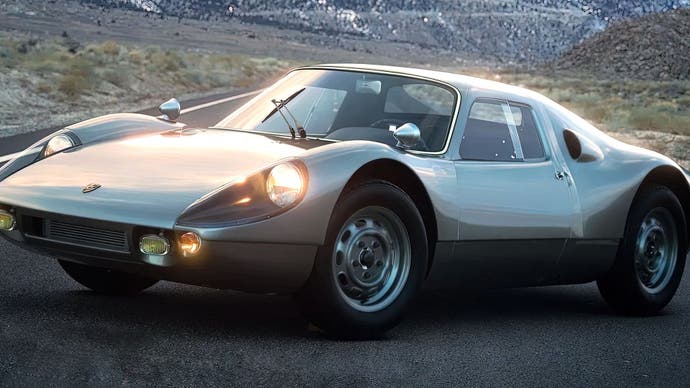




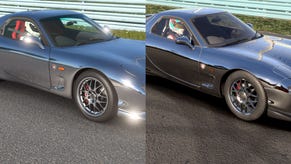
-2-18-screenshot.png?width=291&height=164&fit=crop&quality=80&format=jpg&auto=webp)


